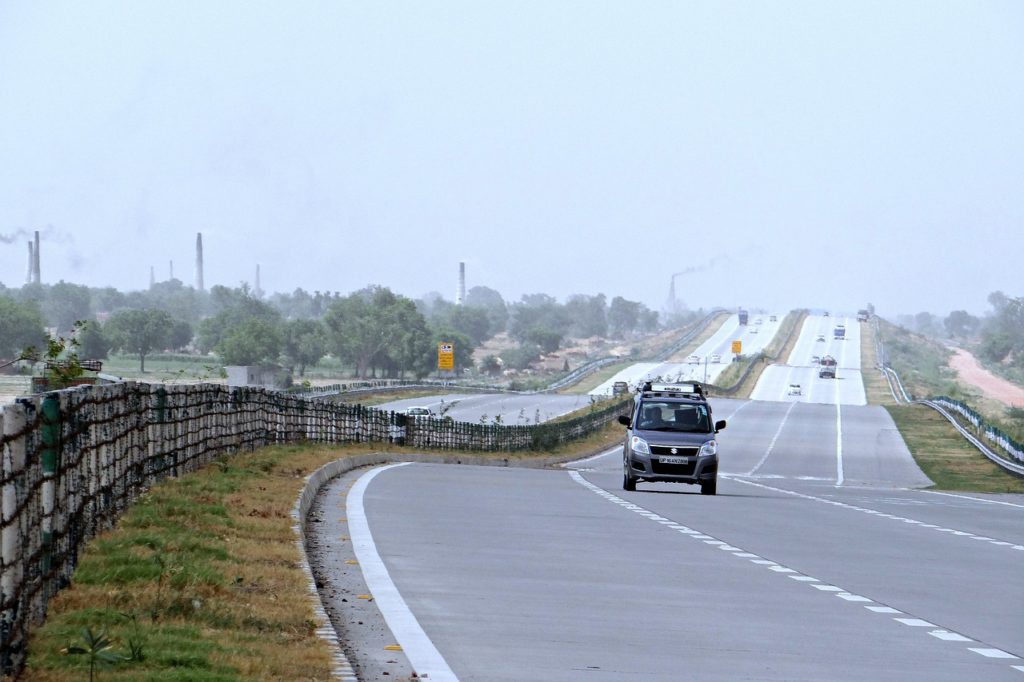Cars the culprits in Delhi’s pollution highways!

Cars and SUVs together contribute 66 percent of the particulate load from all incoming traffic (excluding trucks and light commercial vehicles).

The numbers of personal and passenger vehicles that enter India’s capital New Delhi daily are close to the total number of vehicles that get registered in the national capital in a year, a new survey by the Centre for Science and Environment (CSE) has found.
Ahead of World Environment Day, this is bad news for Delhi that is struggling to minimise pollution levels by experimenting with odd-and-even formula and taking strong action against trucks.
“Delhi’s battle against pollution, congestion and energy guzzling can get increasingly more difficult if its own explosive motorisation gets further aggravated by the huge daily influx of vehicles from outside.
Equal numbers of vehicles are going out of Delhi daily contributing to pollution in the National Capital Region (NCR) towns as well,” CSE’s executive director (research) Anumita Roychowdhury said.
Roychowdhury added that the analysis of the survey reconfirmed that ineffective public policy on public transport connectivity was increasing dependent on personal vehicles, leading to enormous pollution and ill-health in Delhi-NCR.
Cars and SUVs together contribute 66 percent of the particulate load from all incoming traffic (excluding trucks and light commercial vehicles). The two together also contribute 46 percent of the nitrogen oxide load.
CSE had commissioned the survey to VR Techniche to count real time traffic at nine key entry points into Delhi including Kundli, Tikri, Rajokri, Badarpur, Kalindi Kunj, Ghazipur and Shahdara borders in June 2015.
This was conducted with the help of 24×7 video recording of the traffic and counting of all categories of vehicles entering and exiting Delhi.
The survey at nine entry points shows that around 3.07 lakh cars and 1.27 lakh two-wheelers enter Delhi daily.
If this is taken as the 70 percent of the total traffic from all 124 entry points to Delhi, then the total number of cars, SUVs and two-wheelers can be as much as 5.65 lakh – almost equivalent to 5.69 lakh vehicles registered that year in the city according to the Economic Survey of India.
A vehicle-wise break-up shows that 55 percent of all vehicles are cars, 11 percent SUVs and 27 per cent two-wheelers.
What is worse, the cars that enter Delhi daily is more than double what is registered in the city.
In 2014-15, about 1.65 lakh cars and SUVs were registered in Delhi. But daily, approximately 4 lakh enter Delhi from all the entry points.
The incoming cars have the highest per capita carbon dioxide CO2 emissions of 3,031 gram/km (gm/km), followed by SUVs’ 1,919 gm/km and two-wheelers’ at 988 gm/km.
The incoming bus passengers have the smallest carbon footprint of 539 gm/km.
“With this trend, how will Delhi-NCR contribute towards India’s INDC commitment of reducing energy intensity by 35 percent by 2030?” said Roychowdhury.
The study suggested several remedial measures including scaling up of affordable and reliable public transport services, building cycling and walking infrastructure to promote compact city design and reduce dependence on personal vehicles.
They also recommend implementation of Euro VI emission standards by 2020, discouragement of diesel vehicles with strong fiscal and regulatory measures and putting in place a pollution source-wise action plan in the entire Delhi-NCR.
Big Wire










































